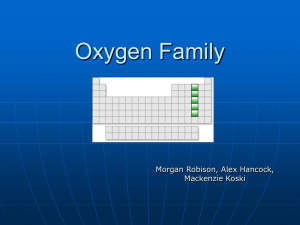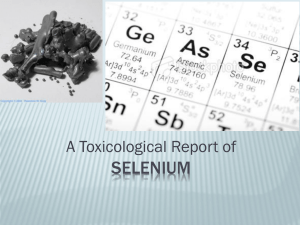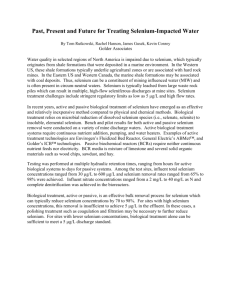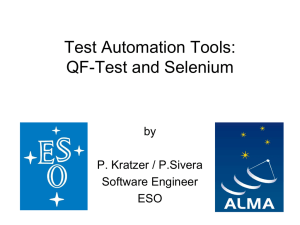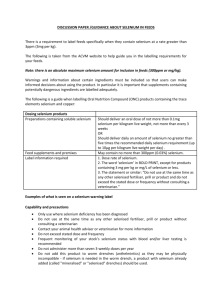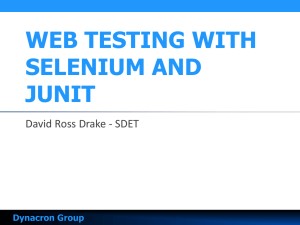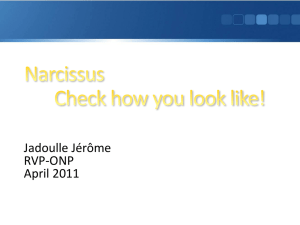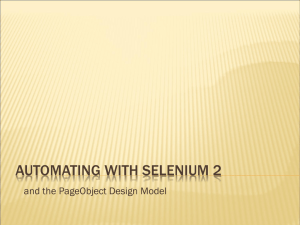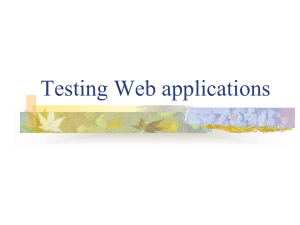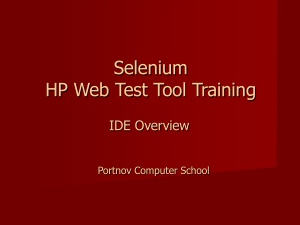Selenium
advertisement
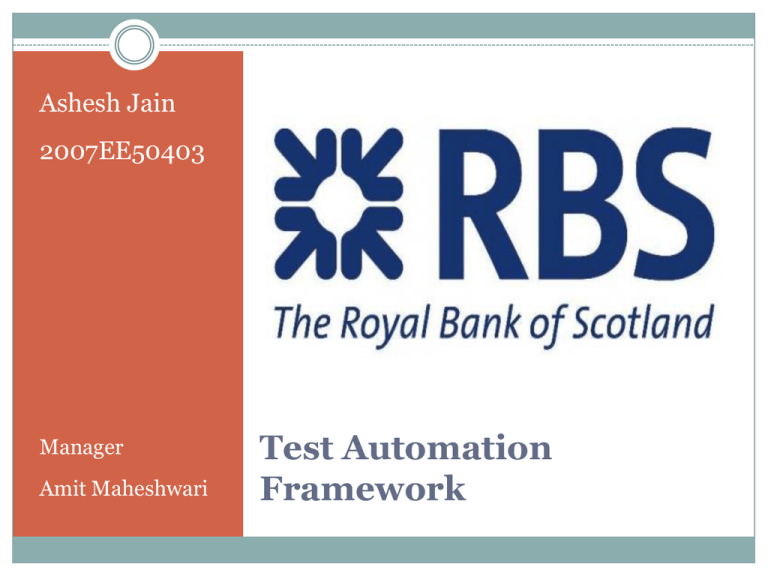
Ashesh Jain 2007EE50403 Manager Amit Maheshwari Test Automation Framework What is Test Automation? Use of software to control the execution of tests Comparing actual and predicted outcomes Test Report generation Mailing the test report UI testing application To check if UI elements are functioning properly Work Assigned Write Test Cases Design a framework for running test cases Integrating test cases with the nightly build Design a UI to run selective test cases UI Testing How application handles keyboard and mouse input How it displays screen text, images, buttons, menus, dialog boxes, toolbars Different UI testing tools: Quick Test Professional(QTP), Selenium, HP QuickTest Professional etc. Software Used Selenium IDE and Selenium RC Maven JBoss, TOMCAT Eclipse IDE Selenium Has two major components Selenium IDE Selenium RC Selenium IDE Building Test Cases Operates as Firefox add on Has a recording & playback feature Tests created in it can also be run against other browsers by using Selenium-RC Selenium RC Allows the use of programming language in developing test logic Provides an API and library for each of its supported languages: HTML, Java, C#, Perl, PHP and Python Tests developed on Firefox can be executed on any other browser via Selenium-RC command line Writing Test Cases HTML test script is generated using Selenium IDE recording feature HTML script is converted to a java code, this feature is provided by Selenium IDE Required logic is coded in java The java code can be run using Selenium RC Pre-requisites for running Test Cases Selenium RC server should be up Application war file should be installed in maven local repository and deployed on JBoss Framework Provided the following features: Integrating test cases with the nightly build During nightly build all the test cases are executed Provides a UI to run a specific test case Integration with nightly built 1. 2. 3. 4. 5. 6. 7. 8. Performed SVN checkout Started JBoss server Deployed war file on JBoss server Started Selenium RC server Executed test cases Stop Selenium RC server Stop JBoss server Mail test report Key Points All the tasks were performed from a single pom file Application directory structure was unchanged Both the directory structures were independent of each other This simplified the task of integrating test cases with the nightly build Directory Structure Master POM Contains SVN checkout code Updates app and soapclient Executes pom-1 and then pom-2 POM-1 Creates “app-version-uat.war” Installs it in maven local repository Tasks Performed by POM-2 Starts JBoss server Looks for “app-version-uat.war” in maven local repository and deploy it on JBoss Starts Selenium RC server Execute test cases Stop Selenium RC server Stop JBoss server Flowchart Executing specific test case UI was made from which a user can choose which test cases to execute Particularly useful after nightly build to check for failed tests UI is created by reading data from an xml file UI Steps Key Points SVN checkout is not performed Application war file should be already installed in maven local repository Testers have to maintain only 3 files: SSOA.xml, config.xml and testdata.xls Targets achieved Framework was designed End to end working of the framework was demonstrated Test cases were integrated with nightly build UI for executing selective test cases was designed Sample test cases were written What I Learned About the structure of RBS How software development is done and what are the different cycles involved I was given a fresh project on which no previous work was done, which provided me with the opportunity to tackle the different problems faced during the initial stages of software development Learned about maven which is extensively used in software development Thank YOU!!

